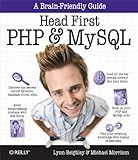Best Tools to Modify MySQL Queries to Buy in December 2025

High Performance MySQL
- AFFORDABLE PRICES FOR QUALITY USED BOOKS.
- THOROUGHLY INSPECTED FOR GOOD CONDITION AND RELIABILITY.
- ECO-FRIENDLY CHOICE: REDUCE WASTE BY BUYING USED!



Head First PHP & MySQL: A Brain-Friendly Guide



Linux Server Hacks: 100 Industrial-Strength Tips and Tools
- AFFORDABLE PRICES FOR QUALITY READS-GET MORE FOR LESS!
- SUSTAINABLE CHOICE: ENJOY BOOKS WHILE REDUCING WASTE.
- THOROUGHLY INSPECTED FOR QUALITY-GREAT VALUE GUARANTEED!



Murach's MySQL
- MASTER ESSENTIAL SQL STATEMENTS FOR MYSQL DATABASE CREATION.
- LEARN PRACTICAL CODING TECHNIQUES FOR REAL-WORLD DATABASE SCENARIOS.
- STEP-BY-STEP GUIDANCE FOR BEGINNERS TO ADVANCED SQL USERS.



Learning PHP, MySQL & JavaScript: With jQuery, CSS & HTML5 (Learning PHP, MYSQL, Javascript, CSS & HTML5)



Build a real Search Engine: Engineering tools: HTML, CSS, JavaScript, PHP, MySQL


To change the timezone in your SQL query, you can use the following steps:
- Determine the timezone you want to change to. The timezone should be specified in the standard timezone format, such as 'UTC', 'America/New_York', 'Asia/Tokyo', etc.
- Identify the specific column or value that needs to be adjusted for the timezone change.
- Use the appropriate timezone conversion function provided by your database system. The function names may vary depending on the database, but common examples include CONVERT_TZ, AT TIME ZONE, or TZOFFSET.
- Update your SQL query by applying the timezone conversion function to the desired column or value. The exact syntax may differ depending on the specific database you are using.
Here's a generic example that demonstrates how to change the timezone in an SQL query using the CONVERT_TZ function:
SELECT CONVERT_TZ(column_name, 'original_timezone', 'desired_timezone') AS modified_column FROM your_table
Replace column_name with the name of the column you want to adjust, 'original_timezone' with the current timezone of the column, and'desired_timezone' with the timezone you wish to change it to.
Remember to refer to your specific database's documentation for the exact function and syntax to use for converting timezones.
What are the options for changing the timezone in a SQL query?
In a SQL query, you can change the timezone using various options depending on the database management system you are using. Here are some common options:
- Using a Date Function: Many databases provide built-in date functions to convert timezones. For example, in MySQL, you can use the CONVERT_TZ() function to convert timestamps from one timezone to another. The syntax would be: SELECT CONVERT_TZ(your_column, 'original_timezone', 'desired_timezone') FROM your_table;
- Using Date Arithmetic: You can also use date arithmetic to adjust timestamps for timezone differences. This involves adding or subtracting the timezone offset from the original timestamp. Here's an example: SELECT your_column + INTERVAL 'n' HOUR FROM your_table; Here, n represents the number of hours to adjust for the new timezone.
- Database Session Settings: Some databases allow you to change the timezone for the entire session. For instance, in PostgreSQL, you can run the following command to set the timezone: SET TIME ZONE 'desired_timezone'; After setting the timezone, all timestamps retrieved in subsequent queries will be adjusted accordingly.
- Application Layer: If you are unable to change the timezone within the SQL query, you can manipulate the timezone in your application layer. Retrieve the timestamp from the database and convert it to the desired timezone using the programming language or framework you are using.
The availability and functionality of these options may vary depending on the database management system you're using. Therefore, it's important to refer to the documentation or resources specific to your database to find the most appropriate method.
What is the impact of changing the timezone in a SQL query?
Changing the timezone in a SQL query can have several impacts, depending on the specific use case and requirements. Listed below are a few possible impacts:
- Consistency: One impact of changing the timezone is ensuring consistency in date and time calculations across different locations. For example, if a database server is in one timezone and data needs to be displayed in a different timezone, changing the timezone in the query helps maintain consistent time representation.
- Query Results: Changing the timezone in a SQL query can affect the results retrieved. If a query involves date or time operations and the timezone is not correctly accounted for, the resulting data may be incorrect or inconsistent.
- Aggregations and Grouping: Timezone changes can impact aggregations and grouping operations. When grouping by time intervals, the representation of the intervals may change due to timezones. For example, aggregating data by hour could result in different boundaries when considering different timezones.
- Data Entry and Display: Timezone changes in a query can affect how data is entered into or displayed from the database. For example, if a user interface allows selecting a timezone for data input, changing the timezone in a query can modify the way data is stored or retrieved.
- Timestamp with Timezone column: If a table schema includes a column of type "timestamp with timezone," changing the timezone in a query can alter the interpretation and display of data stored in that column. The timezone conversion can affect how the timestamps are stored or displayed based on the desired timezone.
It is important to consider the specific use case and requirements when changing the timezone in a SQL query to ensure the desired outcome is achieved.
What is the importance of consistent timezone handling in a SQL query?
Consistent timezone handling in a SQL query is important for several reasons:
- Accuracy of time-based calculations: Timezones play a crucial role when performing calculations involving time, such as finding the difference between two dates or times, calculating averages or aggregations over certain time periods, or determining when a specific event occurred. Consistent timezone handling ensures accurate and meaningful results in these calculations.
- Data integrity and consistency: When working with distributed systems or databases that span across regions, data might be stored in different timezones. Consistent timezone handling ensures that data from different sources is correctly aligned and synchronized, preventing inconsistencies or errors when querying or comparing the data.
- Internationalization and localization: Organizations often operate in multiple countries or serve customers from various timezones. Consistent timezone handling allows businesses to cater to users in different regions, adapt to local time conventions, and provide accurate data representation according to their time preferences or requirements.
- Reporting and analytics: Timely and accurate reports are essential for decision-making. Consistent timezone handling ensures that reports, dashboards, and analytics display data in the correct timezone and provide a standardized view of time-based metrics across the organization.
- Regulatory and compliance requirements: In some industries, such as finance or healthcare, specific regulations might mandate consistent timezone handling. For example, handling patient records, financial transactions, or audit logs might require precise timestamping based on the appropriate timezone to adhere to regulatory requirements.
- Consistency in application behavior: When applications interact with a database, consistent timezone handling ensures that different components of the application (such as the front-end, back-end, and database) interpret and process time-related data consistently. This consistency enhances user experience and avoids confusion or errors caused by mismatched timezones.
Overall, consistent timezone handling in SQL queries is crucial for accurate calculations, data integrity, user experience, compliance, and consistency across applications and systems.
